Apples are one of the most popular and widely consumed fruits in the world. With their crisp texture, refreshing juiciness, and variety of flavors, apples have secured a prime spot in the fruit bowls of many households. When it comes to apples, the choice between red and yellow apples is a common dilemma faced by many. Both varieties have their own unique characteristics that make them appealing to different palates. In this article, we will delve into the nuances of red apples versus yellow apples to help you make an informed decision the next time you’re standing in the produce aisle. Appearance: One of the first things that catches the eye when comparing red apples and yellow apples is their distinct colors. Red apples, as the name suggests, are characterized by their vibrant and rich red skin. The color of red apples can range from a deep, dark red to a lighter crimson hue, adding a pop of color to fruit baskets and salads. On the other hand, yellow apples boast a sunny, golden-yellow skin that exudes a bright and cheerful appearance. The golden hue of yellow apples can vary from pale yellow to a deeper, more intense color, making them visually appealing and inviting. Texture and Flavor: Texture and flavor are two critical aspects that play a significant role in distinguishing red apples from yellow apples. Red apples are known for their crisp and firm texture, providing a satisfying crunch with every bite. The flesh of red apples is juicy and succulent, with a balanced sweetness that makes them a popular choice for snacking and baking. Red apples often exhibit a hint of tartness, adding complexity to their flavor profile. Some popular varieties of red apples include Fuji, Gala, and Red Delicious, each offering a unique taste experience.
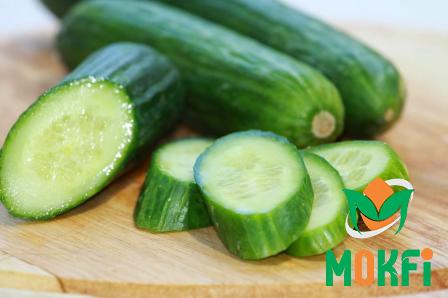
.
 On the other hand, yellow apples are prized for their smooth and tender texture that is less firm than red apples. Yellow apples tend to be juicier and softer, making them ideal for making applesauce or adding a naturally sweet element to salads and desserts. The flavor of yellow apples is typically milder compared to red apples, with a delicate sweetness that appeals to those with a preference for a subtler taste. Varieties such as Golden Delicious, Honeycrisp, and Granny Smith are well-known yellow apples that cater to a range of flavor preferences. Nutritional Value: When it comes to nutritional value, both red and yellow apples offer a host of health benefits that make them a smart choice for a balanced diet. Red apples, particularly those with deep red skin, are rich in antioxidants, specifically flavonoids and polyphenols, which help reduce the risk of chronic diseases and support overall health. The pigment responsible for the red color of these apples, known as anthocyanin, contributes to their antioxidant properties. Additionally, red apples are a good source of dietary fiber, vitamin C, and various minerals, making them a nutritious option for promoting digestive health and boosting the immune system. Yellow apples, while slightly lower in antioxidants compared to red apples, still pack a nutritional punch. They are an excellent source of vitamin C, a powerful antioxidant that helps combat free radicals and protect cells from damage. Yellow apples also contain dietary fiber, which aids in digestion and promotes gut health. The golden hue of yellow apples indicates the presence of carotenoids, such as beta-carotene, which are beneficial for eye health and immune function. Including yellow apples in your diet can enhance your overall well-being and provide essential nutrients to support a healthy lifestyle. Versatility in Cooking: Both red and yellow apples are versatile fruits that lend themselves well to a variety of culinary applications. Red apples are a favorite choice for baking, as their firm texture holds up well when cooked, resulting in a tender and flavorful end product. Whether used in classic apple pies, muffins, or crisps, red apples add a natural sweetness and a touch of tartness that enhances the taste of baked goods. Red apples also pair beautifully with savory ingredients, such as cheese and nuts, in salads and charcuterie boards, creating a harmonious balance of flavors. Yellow apples, with their softer texture and milder flavor profile, are ideal for making applesauce, smoothies, and fruit salads.
On the other hand, yellow apples are prized for their smooth and tender texture that is less firm than red apples. Yellow apples tend to be juicier and softer, making them ideal for making applesauce or adding a naturally sweet element to salads and desserts. The flavor of yellow apples is typically milder compared to red apples, with a delicate sweetness that appeals to those with a preference for a subtler taste. Varieties such as Golden Delicious, Honeycrisp, and Granny Smith are well-known yellow apples that cater to a range of flavor preferences. Nutritional Value: When it comes to nutritional value, both red and yellow apples offer a host of health benefits that make them a smart choice for a balanced diet. Red apples, particularly those with deep red skin, are rich in antioxidants, specifically flavonoids and polyphenols, which help reduce the risk of chronic diseases and support overall health. The pigment responsible for the red color of these apples, known as anthocyanin, contributes to their antioxidant properties. Additionally, red apples are a good source of dietary fiber, vitamin C, and various minerals, making them a nutritious option for promoting digestive health and boosting the immune system. Yellow apples, while slightly lower in antioxidants compared to red apples, still pack a nutritional punch. They are an excellent source of vitamin C, a powerful antioxidant that helps combat free radicals and protect cells from damage. Yellow apples also contain dietary fiber, which aids in digestion and promotes gut health. The golden hue of yellow apples indicates the presence of carotenoids, such as beta-carotene, which are beneficial for eye health and immune function. Including yellow apples in your diet can enhance your overall well-being and provide essential nutrients to support a healthy lifestyle. Versatility in Cooking: Both red and yellow apples are versatile fruits that lend themselves well to a variety of culinary applications. Red apples are a favorite choice for baking, as their firm texture holds up well when cooked, resulting in a tender and flavorful end product. Whether used in classic apple pies, muffins, or crisps, red apples add a natural sweetness and a touch of tartness that enhances the taste of baked goods. Red apples also pair beautifully with savory ingredients, such as cheese and nuts, in salads and charcuterie boards, creating a harmonious balance of flavors. Yellow apples, with their softer texture and milder flavor profile, are ideal for making applesauce, smoothies, and fruit salads.
..
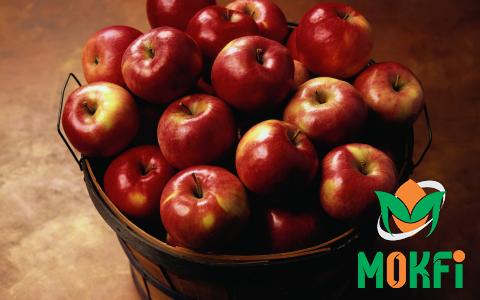 Their tender flesh breaks down easily when cooked, making them a popular choice for purees and compotes. Yellow apples can also be sliced and added to sandwiches or enjoyed on their own as a nutritious snack. The subtle sweetness of yellow apples complements a wide range of dishes, from breakfast oats to roasted meats, adding a gentle touch of flavor to culinary creations. Final Thoughts: In the perennial debate of red apples versus yellow apples, the choice ultimately comes down to personal preference and intended use. Red apples offer a satisfying crunch, a balance of sweetness and tartness, and a rich array of antioxidants, making them a popular choice for snacking and baking. On the other hand, yellow apples boast a tender texture, a delicate sweetness, and a vibrant golden hue that adds a sunny touch to dishes and desserts. Whether you gravitate towards the bold and robust flavor of red apples or prefer the subtle and gentle taste of yellow apples, both varieties contribute to a healthy and delicious diet. Whichever apple you choose, you can be sure that you’re adding a nutritious and flavorful fruit to your meals that will delight your taste buds and nourish your body. So, next time you’re faced with the decision of red apple versus yellow apple, embrace the diversity of flavors and textures that each variety offers and savor the simple joy of biting into a fresh, crisp apple, knowing that you’re making a wholesome choice for your well-being. When it comes to selection… When it comes to selecting red or yellow apples at the grocery store or farmer’s market, there are a few tips to keep in mind to ensure that you pick the best ones. When choosing red apples, look for fruits that have a vibrant color and a smooth, blemish-free skin. Avoid apples with bruises or soft spots, as these may indicate that the fruit is overripe or damaged. Red apples should feel firm to the touch and have a fresh, fragrant aroma. For yellow apples, opt for fruits that have a bright, consistent yellow color and a slightly glossy skin. Choose apples that are firm but yield slightly to gentle pressure, signaling that they are ripe and ready to eat. Avoid yellow apples that are excessively soft or have a dull appearance, as these may be signs of spoilage or poor quality. Smell the stem end of the apple for a sweet, fruity scent, which indicates that the fruit is fresh and flavorful. When it comes to storage… Proper storage is crucial to maintaining the freshness and flavor of red and yellow apples. Both types of apples should be stored in the refrigerator to prolong their shelf life and prevent them from ripening too quickly. Place the apples in a perforated plastic bag or a crisper drawer to help maintain humidity levels and prevent them from drying out.
Their tender flesh breaks down easily when cooked, making them a popular choice for purees and compotes. Yellow apples can also be sliced and added to sandwiches or enjoyed on their own as a nutritious snack. The subtle sweetness of yellow apples complements a wide range of dishes, from breakfast oats to roasted meats, adding a gentle touch of flavor to culinary creations. Final Thoughts: In the perennial debate of red apples versus yellow apples, the choice ultimately comes down to personal preference and intended use. Red apples offer a satisfying crunch, a balance of sweetness and tartness, and a rich array of antioxidants, making them a popular choice for snacking and baking. On the other hand, yellow apples boast a tender texture, a delicate sweetness, and a vibrant golden hue that adds a sunny touch to dishes and desserts. Whether you gravitate towards the bold and robust flavor of red apples or prefer the subtle and gentle taste of yellow apples, both varieties contribute to a healthy and delicious diet. Whichever apple you choose, you can be sure that you’re adding a nutritious and flavorful fruit to your meals that will delight your taste buds and nourish your body. So, next time you’re faced with the decision of red apple versus yellow apple, embrace the diversity of flavors and textures that each variety offers and savor the simple joy of biting into a fresh, crisp apple, knowing that you’re making a wholesome choice for your well-being. When it comes to selection… When it comes to selecting red or yellow apples at the grocery store or farmer’s market, there are a few tips to keep in mind to ensure that you pick the best ones. When choosing red apples, look for fruits that have a vibrant color and a smooth, blemish-free skin. Avoid apples with bruises or soft spots, as these may indicate that the fruit is overripe or damaged. Red apples should feel firm to the touch and have a fresh, fragrant aroma. For yellow apples, opt for fruits that have a bright, consistent yellow color and a slightly glossy skin. Choose apples that are firm but yield slightly to gentle pressure, signaling that they are ripe and ready to eat. Avoid yellow apples that are excessively soft or have a dull appearance, as these may be signs of spoilage or poor quality. Smell the stem end of the apple for a sweet, fruity scent, which indicates that the fruit is fresh and flavorful. When it comes to storage… Proper storage is crucial to maintaining the freshness and flavor of red and yellow apples. Both types of apples should be stored in the refrigerator to prolong their shelf life and prevent them from ripening too quickly. Place the apples in a perforated plastic bag or a crisper drawer to help maintain humidity levels and prevent them from drying out.
…
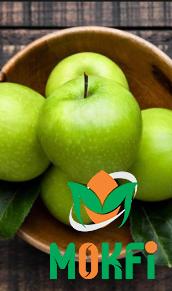 To prevent apples from turning brown after slicing, drizzle them with lemon juice or immerse them in a bowl of water with a splash of vinegar. This simple trick helps preserve the color and texture of the apples, making them more visually appealing and appetizing. When it comes to enjoying… There are countless ways to enjoy red and yellow apples as part of your daily diet. Whether you prefer to snack on them raw, bake them into pies and crumbles, or incorporate them into savory dishes, the versatility of apples makes them a staple ingredient in any kitchen. Here are a few creative ideas for incorporating red and yellow apples into your meals: – Slice red apples and layer them on a sandwich with sharp cheddar cheese and arugula for a delicious and satisfying lunch. – Dice yellow apples and toss them into a spinach salad with walnuts, dried cranberries, and a tangy vinaigrette for a refreshing and nutritious side dish. – Bake red apples with cinnamon, oats, and a drizzle of honey for a comforting and wholesome dessert that’s perfect for cool evenings. – Blend yellow apples with Greek yogurt, almond butter, and a sprinkle of cinnamon for a creamy and satisfying smoothie that makes a nutritious breakfast or snack. – Roast red apples with pork tenderloin, sweet potatoes, and rosemary for a flavorful and aromatic one-pan meal that’s sure to impress your dinner guests. In conclusion… Whether you’re team red apple or team yellow apple, both varieties offer a range of flavors, textures, and nutritional benefits that make them a delightful addition to any meal. From their vibrant colors and crisp textures to their sweet and tangy flavors, red and yellow apples each bring something unique to the table, catering to a diverse array of tastes and preferences. So, the next time you find yourself pondering the choice between red apples and yellow apples, remember that you can’t go wrong with either option. Embrace the beauty and bounty of apples in all their forms, and enjoy the simple pleasure of biting into a fresh, juicy apple that brightens your day and nourishes your body. Whichever apple you choose, you can rest assured that you’re making a delicious and healthful choice that celebrates the abundant goodness of nature’s bounty – one crisp and delightful apple at a time.
To prevent apples from turning brown after slicing, drizzle them with lemon juice or immerse them in a bowl of water with a splash of vinegar. This simple trick helps preserve the color and texture of the apples, making them more visually appealing and appetizing. When it comes to enjoying… There are countless ways to enjoy red and yellow apples as part of your daily diet. Whether you prefer to snack on them raw, bake them into pies and crumbles, or incorporate them into savory dishes, the versatility of apples makes them a staple ingredient in any kitchen. Here are a few creative ideas for incorporating red and yellow apples into your meals: – Slice red apples and layer them on a sandwich with sharp cheddar cheese and arugula for a delicious and satisfying lunch. – Dice yellow apples and toss them into a spinach salad with walnuts, dried cranberries, and a tangy vinaigrette for a refreshing and nutritious side dish. – Bake red apples with cinnamon, oats, and a drizzle of honey for a comforting and wholesome dessert that’s perfect for cool evenings. – Blend yellow apples with Greek yogurt, almond butter, and a sprinkle of cinnamon for a creamy and satisfying smoothie that makes a nutritious breakfast or snack. – Roast red apples with pork tenderloin, sweet potatoes, and rosemary for a flavorful and aromatic one-pan meal that’s sure to impress your dinner guests. In conclusion… Whether you’re team red apple or team yellow apple, both varieties offer a range of flavors, textures, and nutritional benefits that make them a delightful addition to any meal. From their vibrant colors and crisp textures to their sweet and tangy flavors, red and yellow apples each bring something unique to the table, catering to a diverse array of tastes and preferences. So, the next time you find yourself pondering the choice between red apples and yellow apples, remember that you can’t go wrong with either option. Embrace the beauty and bounty of apples in all their forms, and enjoy the simple pleasure of biting into a fresh, juicy apple that brightens your day and nourishes your body. Whichever apple you choose, you can rest assured that you’re making a delicious and healthful choice that celebrates the abundant goodness of nature’s bounty – one crisp and delightful apple at a time.
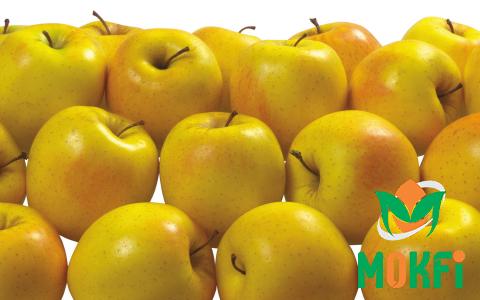
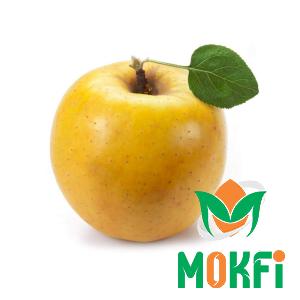
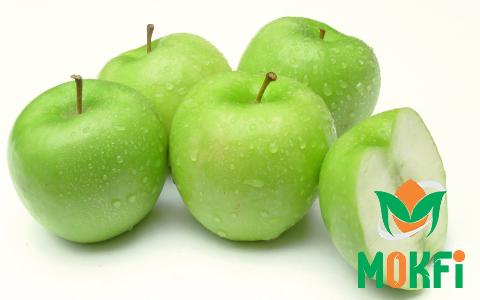
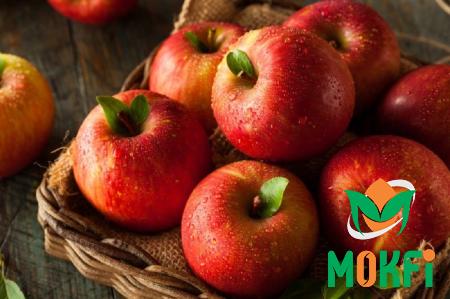
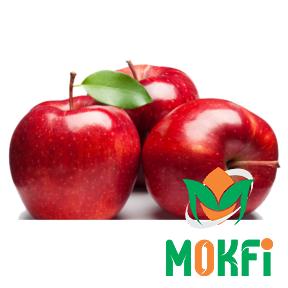
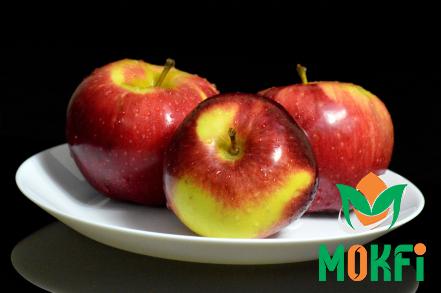
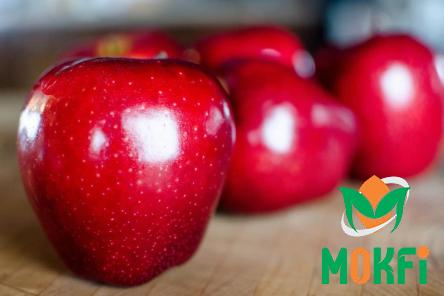
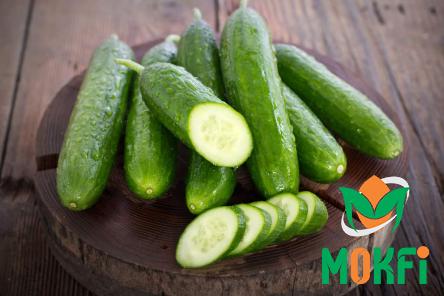
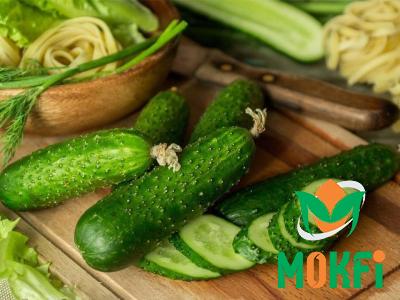

Your comment submitted.